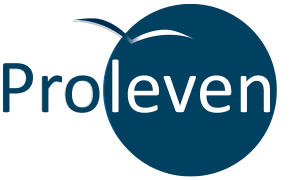
Is non-monetary compensation the best incentive in the new millennium?
- Posted by Matteo Milanesi
- On 29 June 2021
- 0 Comments
An increasing number of organisations are offering employees benefits-in-kind to supplement income, but is this really a winning strategy for employee engagement?
Employee health and wellbeing and levels of employee engagement within a company go hand-in-hand, and rarely will one exist without the other. When employees feel happy and fulfilled at work, their health, both mentally and physically, reaps enormous benefits.
The success of an organisation is also gauged by the degree of employee health & wellbeing, work satisfaction and engagement levels: employees feel more engaged when the work environment feels more like a community than an industrial zone. For instance, adopting a corporate Health & Wellbeing Strategy, introducing relevant initiatives, helps to encourage and create a sense of community through shared experiences, challenges and activities and encourages healthy habits to emerge in the workplace.
However, before doing anything else, you need to demonstrate to your employees that you take their concerns to heart. How? For instance, by listening to employees frequently, whether in formal meetings, or informal gatherings, creating a constant dialogue, sharing views and ideas, helping to build a more collaborative culture.
A collaborative work environment will bring success. The health & wellbeing of your employees needs to become a priority, because it doesn’t take science to point out that work takes up a lot of a person’s energy, both mental and physical.
Workers are becoming increasingly aware that work environments are not healthy: many working hours are spent seated at a desk in front of a computer screen in a closed environment, competition is high, working hours are long, time for yourself is rapidly diminishing and it is rarely quality time. Employees are demanding employers pay more attention to their mental and physical wellbeing: several research papers, amongst which the one by Bank of America stands out, show that the salary itself only accounts for 68% of compensation workers receive for their efforts. The so-called “non-monetary compensation” is a form of pay, which stands right beside the classic method – namely a monetary value expressed as a salary– increasingly used in organisations as there is a generational shift in the workforce, with completely different desires and expectations than previous generations. This can be broadly defined as a “non monetary form of compensation,” which may include any type of benefit, concession or bonus. Staying with the theme of employee health & wellbeing, you might think of offering training programmes so they can learn about healthy eating, or how to manage stress, improve time management and one-to-one coaching sessions with the experts, such as behavioural psychologists and nutritionists.
Smoking and the use of drugs are sadly, all too often, widespread practices in the workplace: offering employees the opportunity to attend guided workshops to help free them of addiction or to help them support a loved one with an addiction, whether colleague or member of the family or friend. It could also be useful for parents so that they learn how to recognise the early signs of addiction in their children, especially teenagers, who are increasingly exposed to the risk.
Other examples on non-monetary benefits could include extra rest days to enjoy with the family or dedicate to personal pursuits, or even arranging coaching sessions for employees, led by an expert, where they can discuss issues, particular problems they may be experiencing and even find a solution.
Rewarding your employees for their efforts using “non-monetary compensation” can prove less costly than a salary increase in the long run. So it is fertile ground to explore, rich with opportunities, and it is also a way of changing the perception of the workplace for the better, thereby improving employee engagement.



